Are you fascinated by the art of shaping metal into precision components or intricate designs? In this comprehensive guide, I'll walk you through the world of metal milling, from the fundamental concepts to advanced applications. Whether you're a beginner looking to understand the basics or an experienced machinist aiming to fine-tune your skills, this article has something for everyone. Let's dive in!
In the world of machining, metal milling is a cornerstone technique. It involves the removal of material from a workpiece using rotary cutters to achieve the desired shape and size. This section covers the fundamental concepts, historical background, and the various types of metal milling techniques.
Metal milling is a subtractive manufacturing process that involves removing material from a workpiece to achieve specific shapes, dimensions, and surface finishes. Key concepts include:
Workpiece: The raw material that undergoes the milling process.
Cutting Tool: The tool, such as an end mill or face mill, that removes material from the workpiece.
Feed Rate: The rate at which the cutting tool advances into the workpiece.
Cutting Speed: The surface speed of the workpiece as it passes under the cutting tool.
Depth of Cut: The depth of material removed in a single pass.
Milling Machine: The equipment used to perform milling operations, available in various types, including vertical and horizontal mills.
Metal milling has a rich history dating back to the early days of the Industrial Revolution. The development of milling machines and techniques played a crucial role in shaping modern manufacturing.
There are several types of metal milling, each with its own applications and characteristics:
Face Milling: Involves cutting with the flat surface of the cutter. It's suitable for creating flat surfaces.
End Milling: Uses the end of the cutter for peripheral milling, slotting, and contouring.
Peripheral Milling: Cutting along the workpiece's perimeter, often used for machining slots and profiles.
Climb Milling: The cutter rotates in the same direction as the feed, resulting in less tool wear.
Conventional Milling: The cutter rotates against the feed direction, which can provide a smoother finish but requires more power.
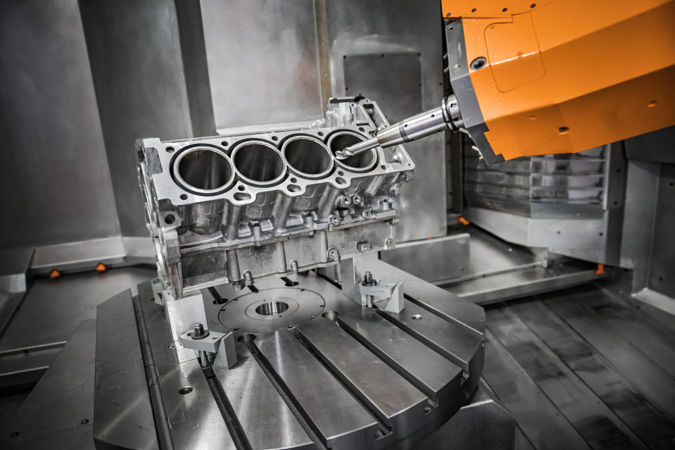
Metal milling involves a series of steps, from selecting the right equipment to quality control. Let's break down these steps:
Choosing the appropriate milling machine and cutting tools is fundamental to a successful milling operation. The choice depends on factors such as material, workpiece size, and precision requirements. Here's a quick overview:
| Equipment Type | Characteristics | Applications |
|---|---|---|
| Vertical Milling Machine | Vertical spindle orientation; ideal for workpieces with relatively simple shapes | General machining, prototyping |
| Horizontal Milling Machine | Horizontal spindle orientation; suited for large, heavy workpieces | Mass production, aerospace |
| Universal Milling Machine | Both vertical and horizontal spindles; versatile for various tasks | Versatile machining, tool room work |
| End Mill | Cylindrical tool with cutting edges; used for slotting and contouring | Slot milling, profiling |
| Face Mill | Flat-bottomed tool with multiple inserts; suitable for flat surfaces | Face milling, surface finish |
| Ball Nose End Mill | Rounded-tip tool; creates complex shapes and contours | 3D machining, die making |
Before milling, proper material preparation and secure workpiece fixturing are essential. Here's what you need to consider:
Material Preparation: Ensure the workpiece is clean and free from contaminants. This may involve cutting the material into the desired shape or size.
Workpiece Fixturing: Use clamps, vises, or other workholding devices to secure the workpiece to the machine's bed. Stability is critical to prevent vibration and ensure accurate milling.
The choice of cutting tools significantly affects the milling outcome. Different materials and tasks require specific tools. Let's delve into the world of milling tools:
| Tool Type | Characteristics | Applications |
|---|---|---|
| High-Speed Steel (HSS) | Versatile and cost-effective; suitable for a wide range of materials | General-purpose milling, tool steel |
| Carbide | Extremely hard and wear-resistant; ideal for high-speed milling | High-strength alloys, hard materials |
| Coated Tools | Enhanced tool life and performance; reduced friction and heat generation | Stainless steel, exotic materials |
| Indexable Inserts | Replaceable cutting edges; cost-effective and versatile | Large-scale production, roughing |
| Diamond Tools | Superhard materials; excellent for non-ferrous materials | Aluminum, graphite |
| PCD Tools | Polycrystalline diamond; offers exceptional wear resistance | High-speed machining, composite materials |
Optimizing the milling process requires adjusting various cutting parameters, including cutting speed, feed rate, and depth of cut. These parameters depend on the material, tooling, and desired results.
Cutting Speed: It's crucial to choose the right cutting speed based on the material. Faster speeds are suitable for soft materials, while slower speeds are necessary for harder materials. Cutting speed is measured in surface feet per minute (SFM) or meters per minute (m/min).
Feed Rate: The feed rate determines how quickly the cutting tool advances into the workpiece. A high feed rate can result in faster material removal, but it must be balanced with the cutting speed to avoid tool wear and overheating. Feed rate is measured in inches per minute (IPM) or millimeters per minute (mm/min).
Depth of Cut: The depth of cut refers to the thickness of material removed in a single pass. Smaller depths of cut are suitable for achieving fine finishes, while larger depths of cut are used for roughing. Careful consideration is required to prevent tool breakage and excessive vibration.
With all preparations in place, it's time to begin the milling process. Here are the essential steps:
Machine Setup: Ensure the milling machine is correctly configured and ready for operation.
Workpiece Loading: Securely attach the workpiece to the machine bed using clamps, vises, or fixtures.
Tool Installation: Insert the chosen cutting tool into the spindle and secure it properly.
Setting Zero Point: Establish the reference point (zero point) for the milling operation. This is where the tool begins its journey.
Milling Operations: Start the machine, and the tool begins cutting into the workpiece. The movement may be controlled manually or through computer numerical control (CNC) programs.
Monitoring: Observe the milling process to ensure that the cutting parameters are being followed, and the workpiece is progressing as intended.
Quality Checks: Periodically inspect the milled workpiece to verify its dimensions and surface finish. Adjustments may be required during this stage to achieve the desired outcome.
Tool Maintenance: Regularly check and maintain the cutting tool to ensure it remains sharp and functional throughout the milling operation.
Coolant Management: If a coolant system is used, ensure it is delivering the required cooling and lubrication to prevent overheating and chip evacuation.
Completion: Once the milling operation is complete, remove the workpiece and inspect it for quality and accuracy.
Quality control is paramount in metal milling to ensure the produced parts meet specifications. Here are some methods for quality control and inspection:
Dimensional Measurement: Use precision instruments such as micrometers and calipers to measure the dimensions of the milled part and compare them to the desired values.
Surface Finish Evaluation: Surface roughness measurements help assess the quality of the milled surface. Techniques like profilometry and surface roughness testers provide quantitative data.
Visual Inspection: Visually inspect the part for defects, surface finish, and any signs of tool marks or imperfections.
Non-Destructive Testing: Techniques like ultrasonic testing or magnetic particle testing can be used for non-destructive inspection, especially in critical applications.
Documentation: Keep records of all quality control measurements and inspection results for traceability and compliance with industry standards.
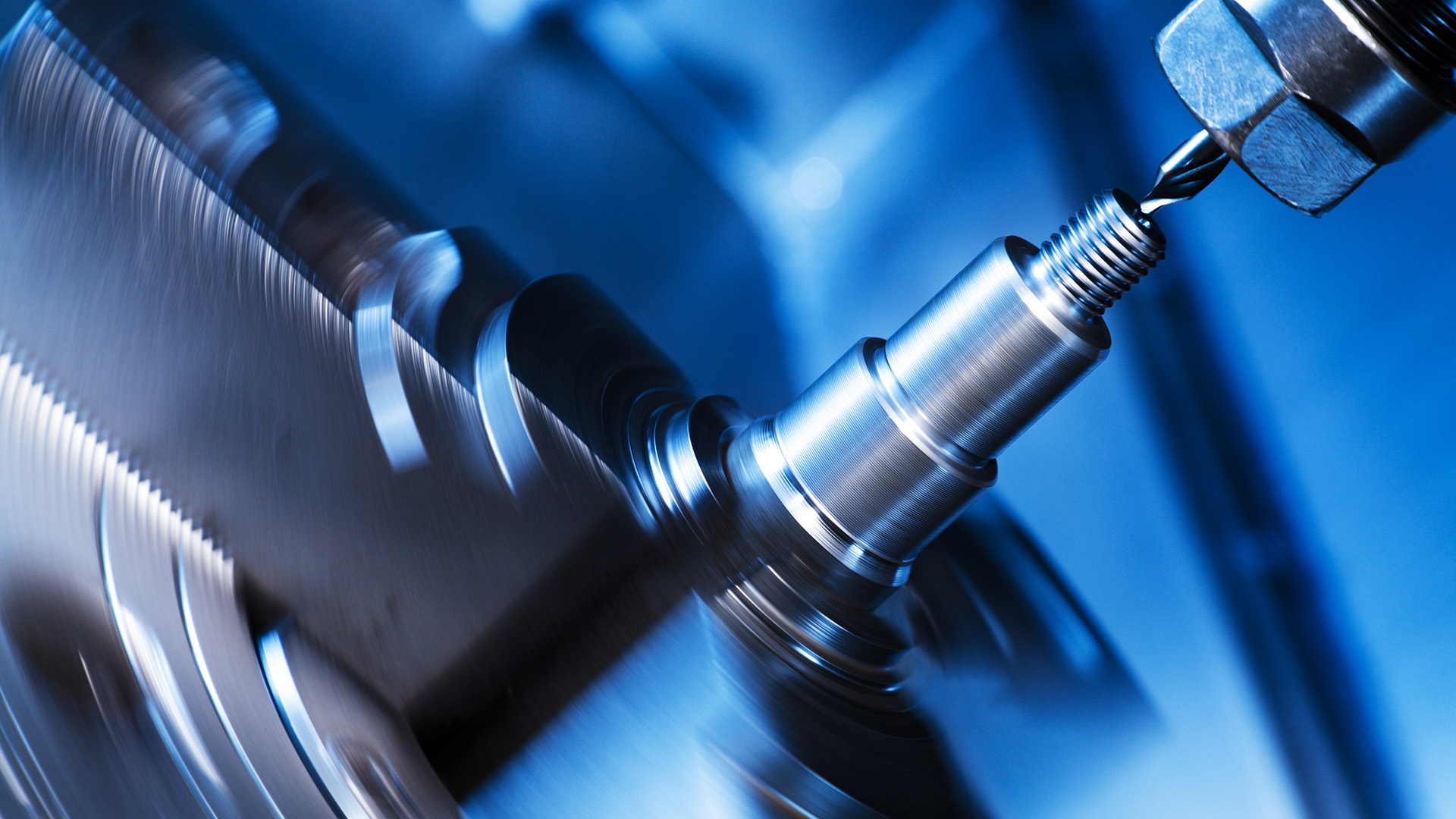
Metal milling plays a pivotal role in various industries, each with specific requirements and applications:
Manufacturing encompasses a wide range of industries, from electronics to consumer goods. Metal milling is a fundamental part of the manufacturing process, used to create components for products we use daily, such as smartphones, appliances, and more.
In the aerospace industry, precision and quality are non-negotiable. Metal milling is used to manufacture critical components like turbine blades, landing gear, and aircraft structures. Its ability to produce lightweight, high-strength parts is crucial for aircraft performance.
The automotive sector relies on metal milling for producing engine components, transmission parts, and body panels. The industry's demand for tight tolerances and high volumes makes metal milling an indispensable process.
Tool and die makers create molds, dies, and tooling used in various industries. Metal milling is central to the production of these precision tools, ensuring that they meet strict specifications and deliver consistent results.
Industries such as medical equipment manufacturing and scientific instrument production depend on metal milling to create intricate components with exceptional precision. These applications require close attention to detail and the ability to achieve complex shapes and tolerances.
In the world of art and sculpture, metal milling has expanded creative horizons. Artists and sculptors use CNC milling machines to bring intricate and large-scale metal sculptures to life. The precision of milling allows for detailed, customized artwork.
Achieving success in metal milling relies on adhering to best practices and employing effective techniques:
Maintain Rigidity: Ensure that the workpiece, tool, and milling machine are stable and free from vibration to achieve precise results.
Tool Runout: Minimize tool runout, which can cause inaccuracies, by using properly calibrated and aligned tools.
Toolpath Strategies: Utilize advanced toolpath strategies, including high-speed machining and trochoidal milling, to improve accuracy.
Cutting Tool Selection: Choose cutting tools that match the application and material to achieve the required precision.
Optimal Toolpaths: Implement efficient toolpaths, reducing unnecessary tool movements and ensuring consistent chip evacuation.
Tight Tolerances: Be meticulous in maintaining tight tolerances through careful setup, tool selection, and monitoring.
Material Analysis: Understand the material properties to determine the appropriate cutting speed range.
Chip Load Calculation: Calculate the ideal chip load for the selected tool to optimize the feed rate.
Test Runs: Conduct test runs with different combinations of cutting speeds and feed rates to find the sweet spot for your specific application.
Regular Inspection: Perform routine checks on cutting tools to detect wear and damage early.
Tool Sharpening: Develop a tool sharpening and replacement schedule to ensure consistently sharp tools.
Coolant Usage: Use appropriate coolants and lubricants to reduce heat and extend tool life.
Correct Tool Storage: Store tools properly to prevent damage and maintain sharp edges.
Safety Protocols: Follow established safety procedures to ensure the well-being of operators and prevent accidents.
Training: Properly train personnel in safe machine operation and tool handling.
Protective Gear: Use personal protective equipment (PPE), including safety glasses and hearing protection.
Machine Checks: Regularly inspect the milling machine for safety and functionality.
Emergency Procedures: Establish clear emergency procedures for stopping the machine in case of unforeseen events.
Improper Feeds and Speeds: Accurate feeds and speeds are critical for successful milling. Always refer to manufacturer recommendations and conduct tests.
Toolpath Errors: Errors in the toolpath can result in poor surface finish or incorrect part dimensions. Verify and optimize toolpaths before machining.
Neglecting Tool Inspection: Failing to inspect tools can lead to excessive wear, poor results, and potential damage to the workpiece.
Inadequate Chip Control: Inefficient chip evacuation can lead to tool breakage and surface defects. Implement effective chip control methods.
Overlooking Coolant Management: Proper coolant flow is essential for temperature control and chip removal. Monitor and maintain the coolant system.
Lack of Operator Training: Untrained operators are more likely to make errors and encounter safety risks. Invest in comprehensive training programs.
CAM Software: Use Computer-Aided Manufacturing (CAM) software to generate toolpaths for complex shapes.
Toolpath Optimization: Optimize toolpaths for intricate geometries to reduce machining time and improve accuracy.
Fixture Design: Create custom fixtures for holding irregular workpieces securely during machining.
Tool Selection: Choose specialized tools, such as ball nose end mills or custom tooling, for complex contouring and 3D machining.
Sustainable Practices: Implement sustainable machining practices, such as recycling and responsible coolant disposal.
Energy Efficiency: Optimize machine settings to reduce energy consumption, contributing to a greener operation.
Waste Reduction: Minimize waste generation and promote environmentally friendly disposal methods.
This section provides an in-depth look at the various types of milling machines, cutting tools, and related equipment used in the metal milling process. Choosing the right equipment is essential to ensure successful milling operations.
Milling machines come in various configurations, each suited to specific applications. Here, we explore the different types and their key characteristics:
Vertical Milling Machine: This type of milling machine features a vertically oriented spindle, making it suitable for workpieces with relatively simple shapes. It is commonly used for general machining and prototyping.
Horizontal Milling Machine: Horizontal milling machines have a horizontally oriented spindle, which makes them well-suited for large, heavy workpieces. They are ideal for mass production and applications in aerospace and other industries.
Universal Milling Machine: Universal milling machines combine the features of both vertical and horizontal mills, offering versatility for various tasks. They are often used in tool rooms and for versatile machining purposes.
Choosing the right type of milling machine depends on the specific requirements of your project. For instance, if you're working on complex, irregularly shaped workpieces, a universal milling machine might be the best choice. On the other hand, a vertical milling machine is more suitable for simpler workpieces and general machining.
Selecting the appropriate cutting tools and end mills is crucial for successful metal milling. Different materials and applications require specific types of tools. Here's an overview of some commonly used cutting tools:
High-Speed Steel (HSS): High-speed steel tools are versatile and cost-effective, making them suitable for a wide range of materials, including general-purpose milling and tool steel.
Carbide: Carbide tools are extremely hard and wear-resistant, making them ideal for high-speed milling applications. They are commonly used for high-strength alloys and hard materials.
Coated Tools: Coated tools feature special coatings that enhance tool life and performance. They reduce friction and heat generation, making them suitable for stainless steel and exotic materials.
Indexable Inserts: Indexable inserts are cutting tool inserts with replaceable cutting edges. They are cost-effective and versatile, making them a popular choice for large-scale production and roughing operations.
Diamond Tools: Diamond tools are used for machining superhard materials and are excellent for non-ferrous materials like aluminum and graphite.
PCD Tools (Polycrystalline Diamond): PCD tools offer exceptional wear resistance and are ideal for high-speed machining and composite materials.
Choosing the right cutting tool depends on factors such as the material you're working with, the required surface finish, and the complexity of the workpiece. Additionally, the proper selection of end mills, which are cylindrical cutting tools with cutting edges, is essential for specific milling tasks like slotting and contouring.
In many metal milling operations, especially those involving harder materials, the use of cutting fluids or coolants is common. These coolants provide lubrication and cooling to the cutting tool and workpiece, reducing heat and friction, which can prolong tool life and enhance surface finish. However, it's crucial to choose the right type of coolant based on the material being machined and ensure proper management of coolant levels and flow.
Now that you have an understanding of the equipment and tools used in metal milling, you can make informed choices for your specific milling projects.
Metal milling can present various challenges, but with the right techniques and knowledge, these challenges can be addressed effectively. Let's explore some common issues and solutions:
Tool Selection: Choose specialized cutting tools designed for specific challenging materials. For example, use carbide tools for hard materials and PCD tools for abrasive composites.
Reduced Cutting Speed: Decrease cutting speed when machining challenging materials to minimize tool wear and heat generation.
Effective Chip Evacuation: Optimize chip evacuation methods to prevent chip buildup and potential tool damage.
Coolant Selection: Use appropriate cutting fluids or coolants tailored to the material's characteristics for efficient cooling and lubrication.
Custom Fixturing: Design custom fixtures and workholding solutions to securely hold irregularly shaped workpieces during machining.
Toolpath Optimization: Utilize advanced CAM software to generate toolpaths that accommodate complex workpiece shapes and contours.
Advanced Machining Techniques: Implement advanced machining techniques like 5-axis machining to access and machine multiple angles and surfaces.
Measurement and Inspection: Regularly measure and inspect workpieces to ensure they conform to the desired dimensions and specifications.
Stability Enhancements: Ensure the milling machine, workpiece, and tool are rigidly secured to minimize vibrations during the machining process.
Damping Systems: Implement vibration-damping systems and techniques to absorb vibrations and reduce noise levels.
Balanced Cutting Tools: Use well-balanced cutting tools to minimize vibrations and enhance cutting stability.
Toolpath Optimization: Optimize toolpaths to minimize sudden changes in direction, which can contribute to vibration.
Tool Runout Control: Minimize tool runout by calibrating and aligning tools accurately.
Workpiece Alignment: Ensure precise workpiece alignment to prevent angular errors during machining.
Optimal Cutting Parameters: Fine-tune cutting parameters such as feed rate, depth of cut, and cutting speed to achieve the desired surface finish.
Toolpath Smoothing: Use CAM software to create smoother toolpaths, reducing abrupt changes that can affect surface finish.
Tool and Workpiece Cooling: Implement effective coolant systems to manage heat and reduce thermal deformation.
Slow Material Removal: Adopt techniques such as light cuts and multiple passes to minimize the generation of excess heat.
Material Selection: Choose materials with low thermal expansion characteristics for applications where thermal stability is crucial.
Chip Breakers: Utilize cutting tools with chip breakers to promote controlled chip formation.
Chip Conveyors: Employ chip conveyors or augers to efficiently remove chips from the machining area.
Proper Tool Setup: Ensure that the cutting tool is set up correctly to facilitate effective chip evacuation.
By addressing these common challenges, you can significantly enhance the success of your metal milling projects and achieve precise results even in complex scenarios.
If you're looking for professional metal milling services, Richconn is a leader in precision machining, offering a wide range of services to meet your specific needs.
Richconn is a trusted name in the field of precision machining. With years of experience and a commitment to excellence, they have established themselves as a reliable partner for clients across various industries.
Richconn offers a diverse range of metal milling services, including:
Prototype Development: From initial concept to prototype production, Richconn can turn your ideas into reality with precision machining.
High-Volume Production: Whether you need components in small quantities or high volumes, Richconn has the capacity and expertise to deliver on your requirements.
Discover real-world examples of Richconn's successful projects and satisfied clients. These case studies showcase the company's dedication to quality and customer satisfaction.
Richconn specializes in tailoring solutions to your unique requirements. They work closely with clients to understand their specific needs and deliver precise, customized solutions that meet and exceed expectations.
Richconn is committed to quality control and sustainable practices. They prioritize precision, consistency, and environmental responsibility in all their operations.
If you're interested in collaborating with Richconn or learning more about their metal milling services, you can find their contact information and explore potential partnership opportunities.
In conclusion, whether you're an aspiring machinist or a seasoned professional, this guide provides a comprehensive understanding of metal milling techniques and applications. It's a roadmap to help you navigate the intricate world of metal milling, master the craft, and discover innovative solutions, like those offered by Richconn. Happy milling!
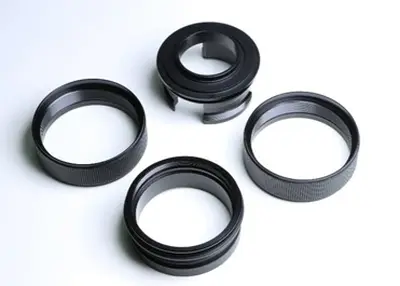 Compression Mold 101: Details for Compression MoldingMarch 12, 2024What is compression molding and how does compression molding work? Discover different types of compression molding along with the pros and cons.view
Compression Mold 101: Details for Compression MoldingMarch 12, 2024What is compression molding and how does compression molding work? Discover different types of compression molding along with the pros and cons.view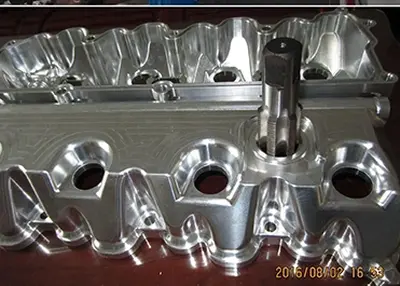 What Are the Benefits of Cnc Precision Machining?October 25, 2023The sunk costs of CNC precise machining may be a bit higher than traditional machining methods. However, in the long run, the benefits offered by the process definitely make it worth the extra investment, and today Richconn will share with you what all the benefits of CNC machining are.view
What Are the Benefits of Cnc Precision Machining?October 25, 2023The sunk costs of CNC precise machining may be a bit higher than traditional machining methods. However, in the long run, the benefits offered by the process definitely make it worth the extra investment, and today Richconn will share with you what all the benefits of CNC machining are.view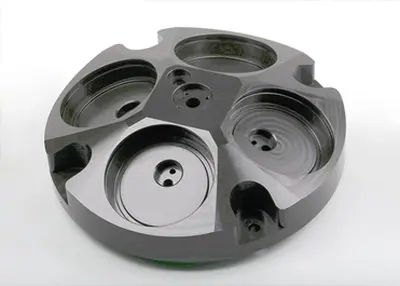 Understanding the Properties of Anodizing Process in One ReadingApril 4, 2023Nowadays, the use of metal technology is quite popular, and many machines in the market have large metal parts. One of the surface treatment processes for metal is anodizing, which is very commonly us...view
Understanding the Properties of Anodizing Process in One ReadingApril 4, 2023Nowadays, the use of metal technology is quite popular, and many machines in the market have large metal parts. One of the surface treatment processes for metal is anodizing, which is very commonly us...view 2023 ShenZhen International Industrial Automation Robot ExhibitionMarch 6, 20232023 ShenZhen International Industrial Automation Robot ExhibitionThe 12th ShenZhen International Industrial Automation and Robot ExhibitionCome back to ShenZhen in 2023 to write a new chapter of inte...view
2023 ShenZhen International Industrial Automation Robot ExhibitionMarch 6, 20232023 ShenZhen International Industrial Automation Robot ExhibitionThe 12th ShenZhen International Industrial Automation and Robot ExhibitionCome back to ShenZhen in 2023 to write a new chapter of inte...view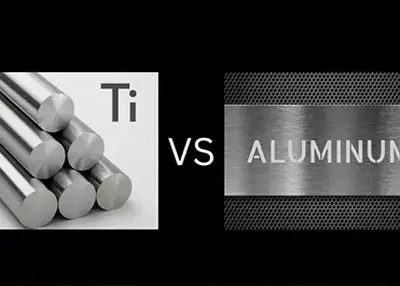 Titanium vs. Aluminum: Which is the Best Lightweight Metal?November 23, 2023Titanium and Aluminum are two excellent lightweight metals, and when it comes to machining, the choice of material is a crucial decision. Titanium and Aluminum are both common lightweight metal materials, and both have their own unique advantages in different situations.view
Titanium vs. Aluminum: Which is the Best Lightweight Metal?November 23, 2023Titanium and Aluminum are two excellent lightweight metals, and when it comes to machining, the choice of material is a crucial decision. Titanium and Aluminum are both common lightweight metal materials, and both have their own unique advantages in different situations.view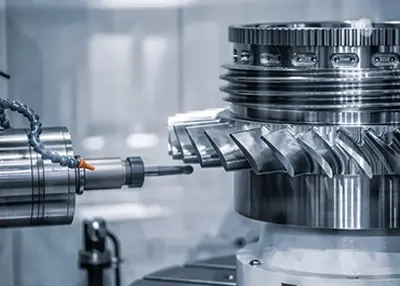 What Is a Shaft?October 30, 2023A shaft is basically a rotating part of any machine, having a circular cross-section, which is used to transmit power from one part to another or from a power generating machine to a power absorbing machine. To transmit power, one end of the shaft is connected to the power source and the other end is connected to the machine. Shafts can be solid or hollow as per requirement, hollow shafts help in reducing weight and provide advantages.view
What Is a Shaft?October 30, 2023A shaft is basically a rotating part of any machine, having a circular cross-section, which is used to transmit power from one part to another or from a power generating machine to a power absorbing machine. To transmit power, one end of the shaft is connected to the power source and the other end is connected to the machine. Shafts can be solid or hollow as per requirement, hollow shafts help in reducing weight and provide advantages.view